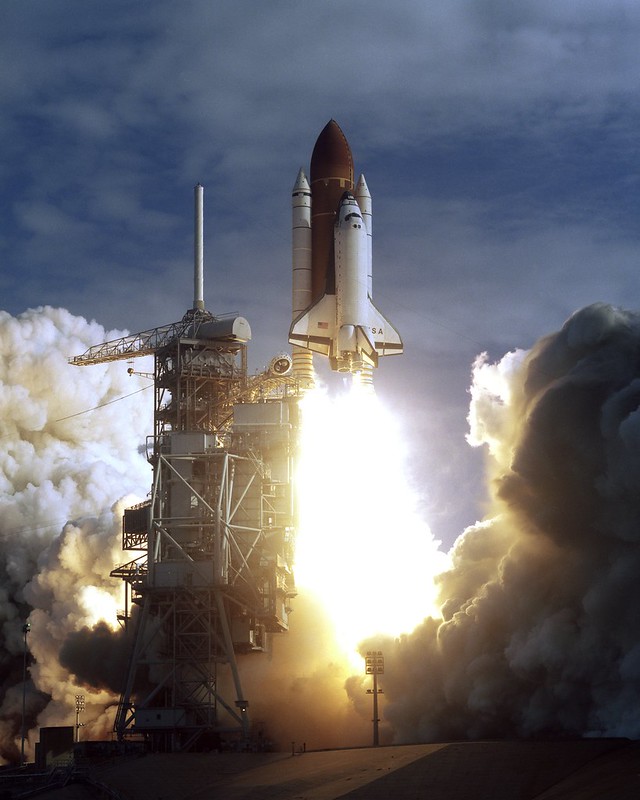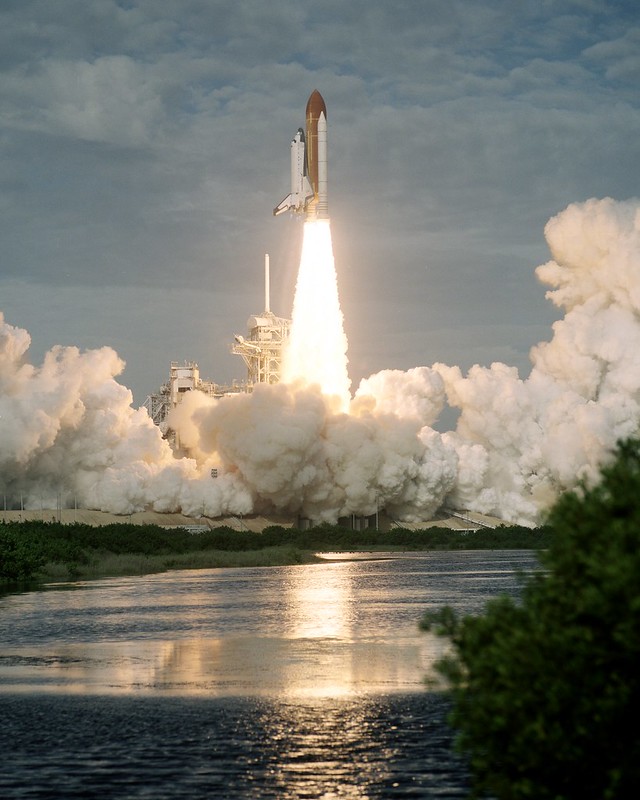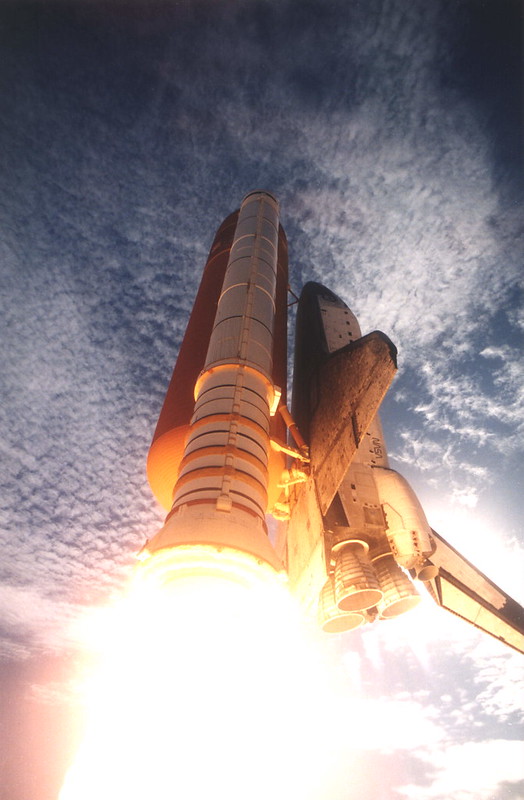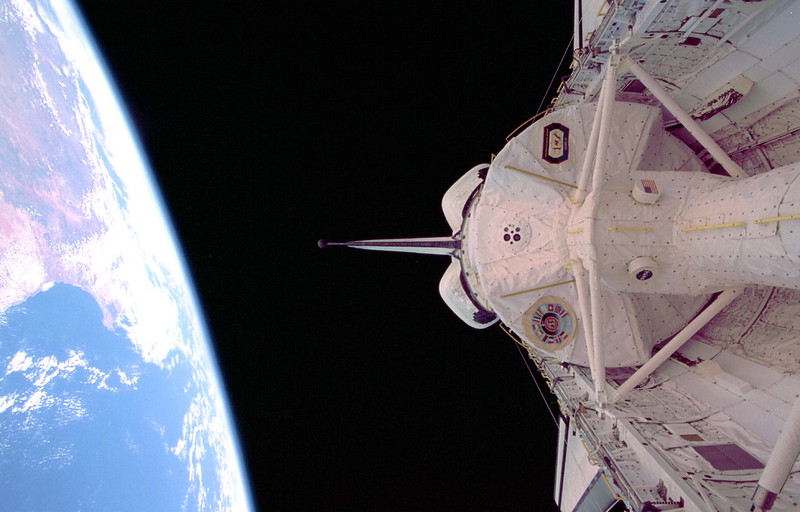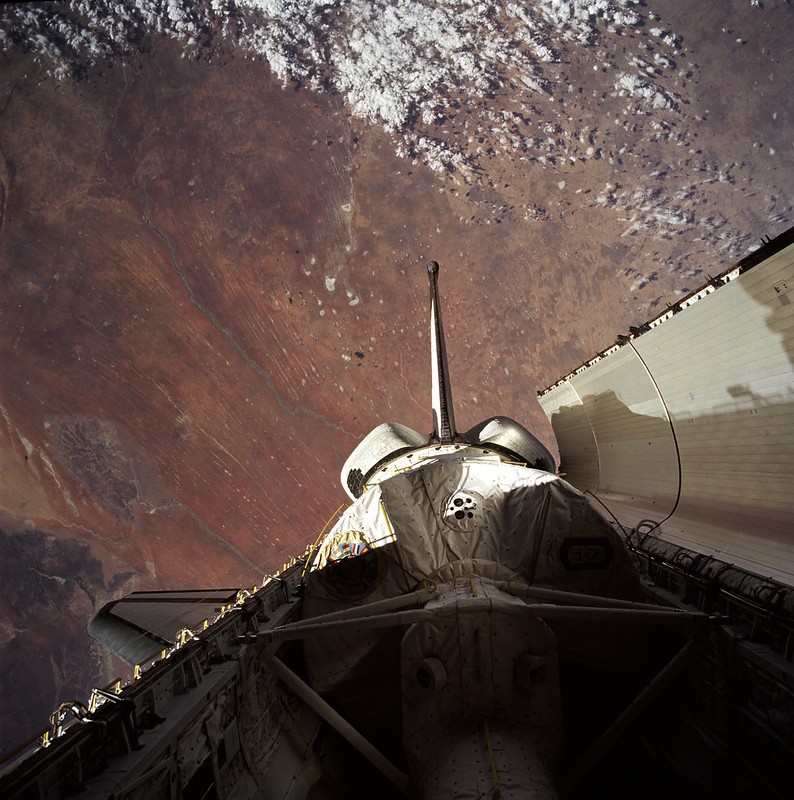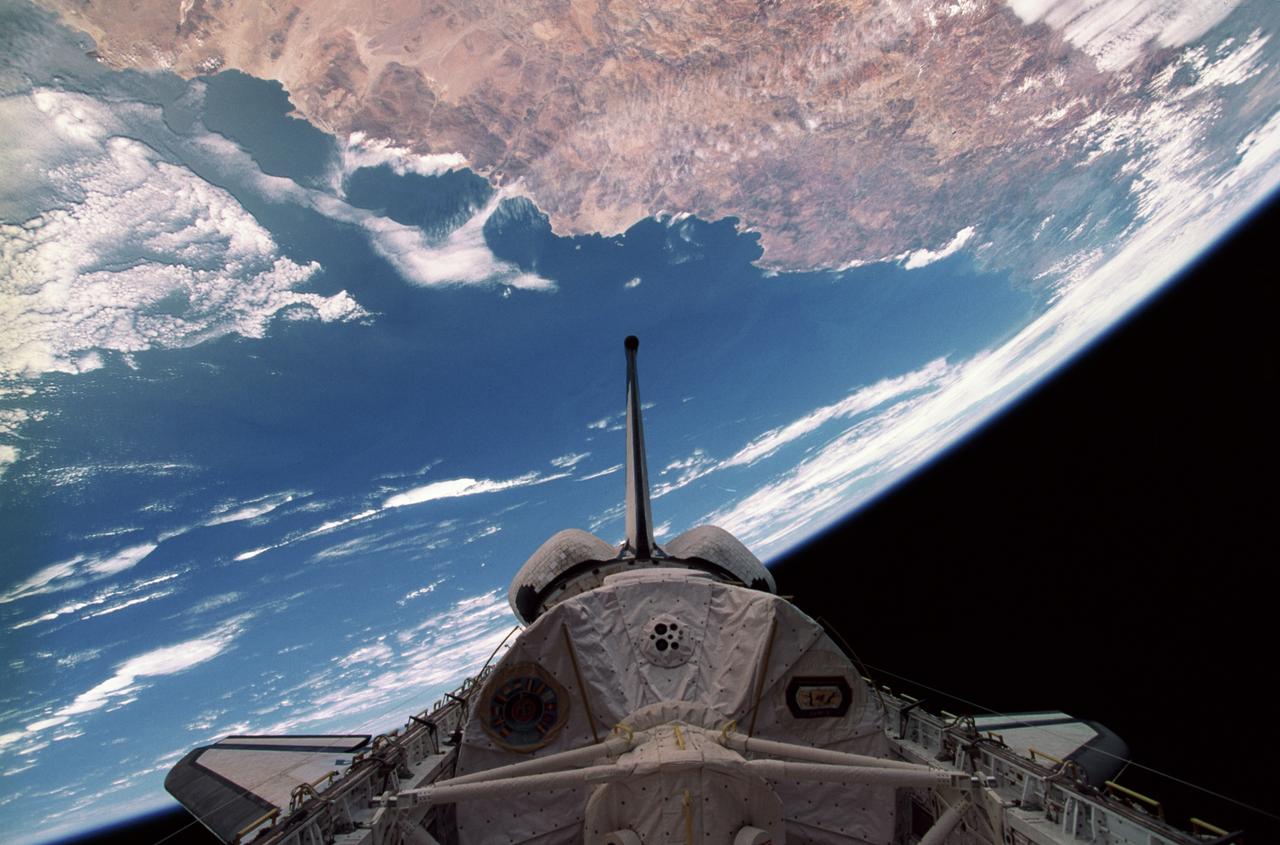STS-73 Fact Sheet
By Cliff Lethbridge
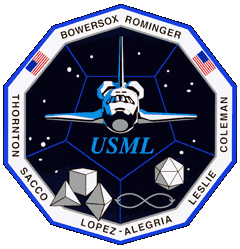
STS-73 — Columbia
72nd Space Shuttle Mission
18th Flight of Columbia
Crew:
Kenneth D. Bowersox, Commander
Kent V. Rominger, Pilot
Kathryn C. Thornton, Payload Commander
Catherine G. Coleman, Science Mission Specialist
Michael E. Lopez-Alegria, Mission Specialist
Fred W. Leslie, Payload Specialist
Albert Sacco, Jr., Payload Specialist
Orbiter Preparations:
Tow to Vehicle Assembly Building (for storage) – April 14, 1995
Rollover to Orbiter Processing Facility – April 21, 1995
Rollover to Vehicle Assembly Building – August 22, 1995
Rollout to Launch Pad 39B – August 28, 1995
Launch:
October 20, 1995 – 9:53:00 a.m. EDT. A successful launch after six previous attempts tied STS-61C for the most scrubs in a single mission.
Launch was originally scheduled for September 25, 1995 but was scrubbed when a hydrogen leak was detected in Main Engine Number One shortly after tanking operations began. The Main Fuel Valve in the engine was replaced at the launch pad.
Rescheduled launch attempt on October 5, 1995 was postponed one day to wait for disturbed weather associated with Gulf of Mexico Hurricane Opal to clear Florida.
October 6, 1995 launch attempt was scrubbed prior to external fuel tank loading operations when it was discovered that hydraulic fluid was inadvertently drained from the hydraulic system of Main Engine Number One following the fuel valve replacement associated with the September 25, 1995 scrub.
Analysis determined that existing hydraulic pressure would facilitate a launch, which was rescheduled for October 7, 1995. This launch attempt was scrubbed at T-20 seconds when the orbiter’s Master Events Controller 1 (MEC 1) failed and needed to be replaced.
Launch was rescheduled for October 14, 1995 but slipped back to October 15, 1995 to allow additional time for main engine oxidizer ducts to be inspected. Cracks were found in similar ducts on a test engine at NASA’s Stennis Space Center. Time was also taken to replace a faulty general purpose computer (GPC 1).
October 15, 1995 launch attempt was scrubbed at T-5 minutes due to low clouds and rain at the launch site. This was the 6th and final scrub.
Launch was rescheduled for no earlier than October 19, 1995 pending the launch of an Atlas-Centaur rocket from Cape Canaveral Air Station, which had pre-scheduled range priority. Atlas-Centaur launch operations were delayed on October 18, 1995 and Columbia’s launch was rescheduled for October 20, 1995.
October 20 launch was delayed three minutes due to a glitch in a range safety computer.
Landing:
November 5, 1995 – 6:45:21 a.m. EST at Runway 33, Kennedy Space Center. Rollout distance was 9,032 feet. Rollout time was 55 seconds. Mission duration was 15 days, 21 hours, 52 minutes, 28 seconds. Landing occurred during the 256th orbit.
Mission Summary:
This was the second flight of the U.S. Microgravity Laboratory (USML-2), building upon the scientific observations of USML-1 flown during STS-50. Both USML operations were performed inside the orbiter’s Spacelab module housed in the payload bay.
Extensive research was conducted in fluid physics, materials science, biotechnology, combustion science and commercial space processing.
For the first time, the Fiber Supported Droplet Combustion Experiment was utilized. 25 droplets of a variety of fuels were ignited to confirm theories on how certain fuels burn in microgravity.
Five small potatoes were grown in orbit from tubers in the astroculture plant growth facility. This further demonstrated that edible foods can be grown in space.
A record 1,500 Protein Crystal Growth (PCG) experiments were flown on USML-2.
During the flight, the crew took time to videotape a ceremonial first pitch for the 1995 World Series, which was shown at the start of Game Five. This marked the first time a ceremonial first pitch was “thrown” by someone not actually in the ballpark.
SELECTED NASA PHOTOS FROM STS-73

